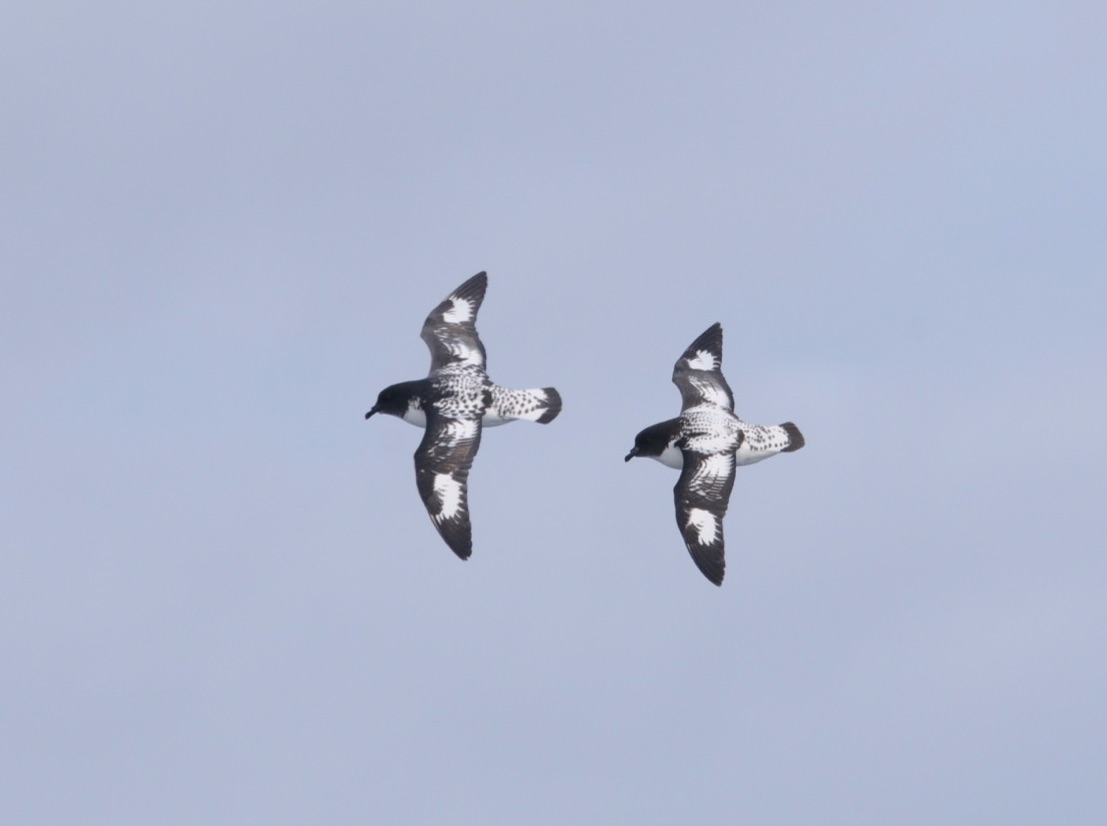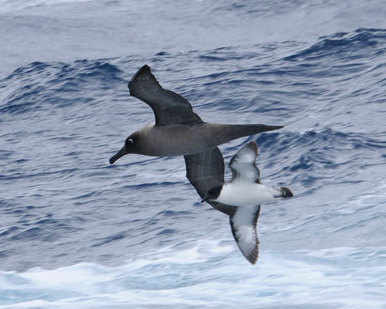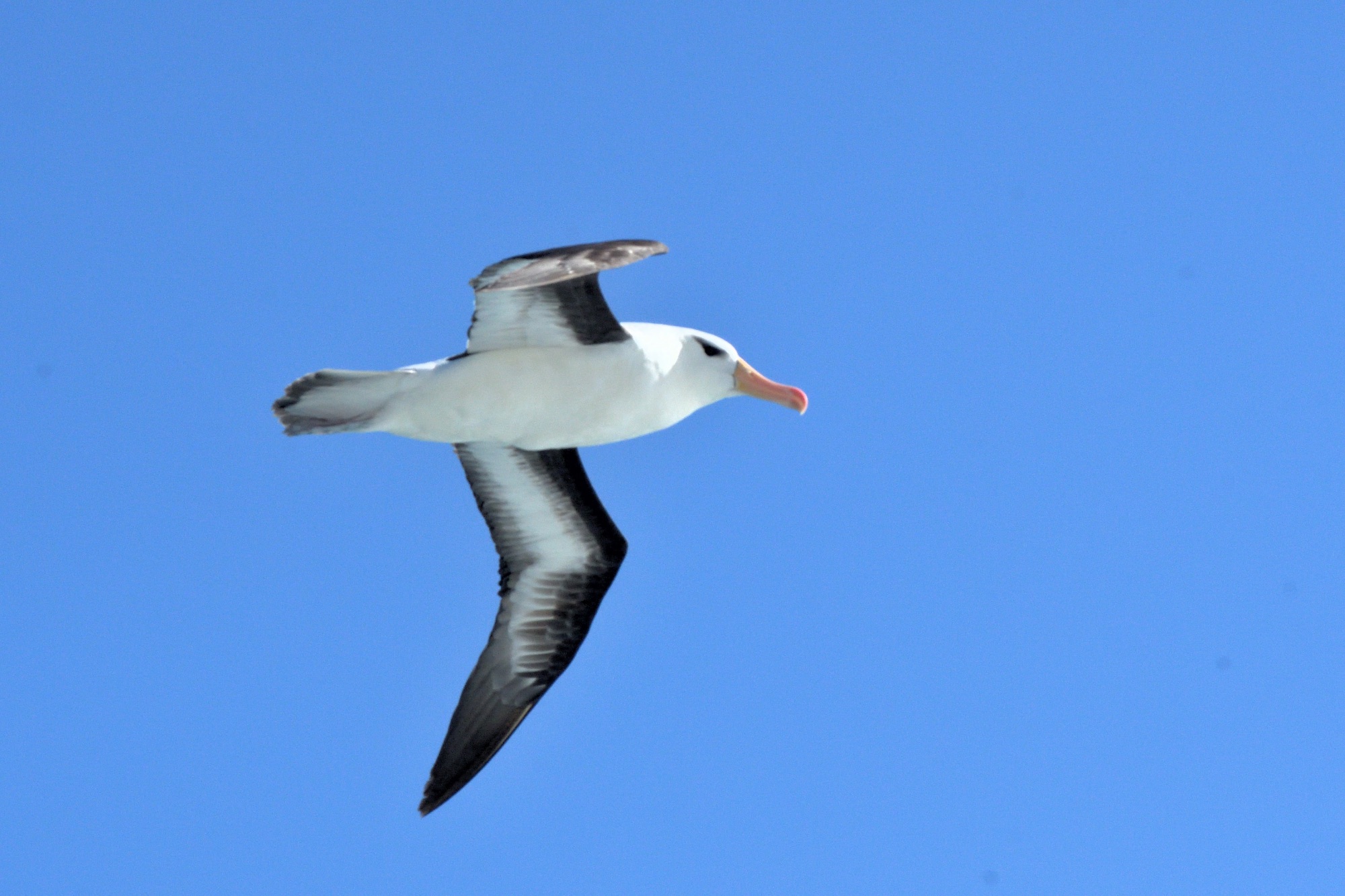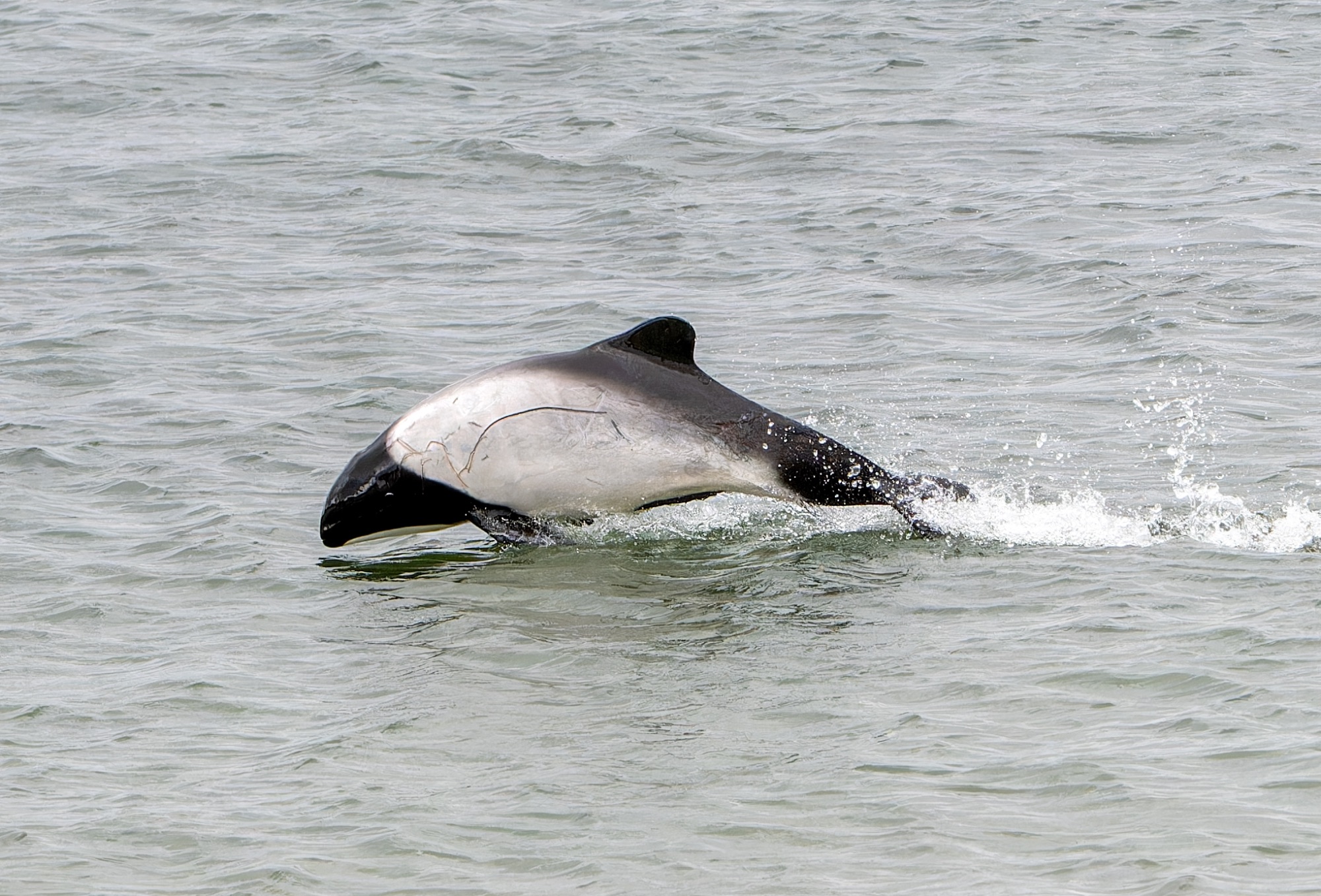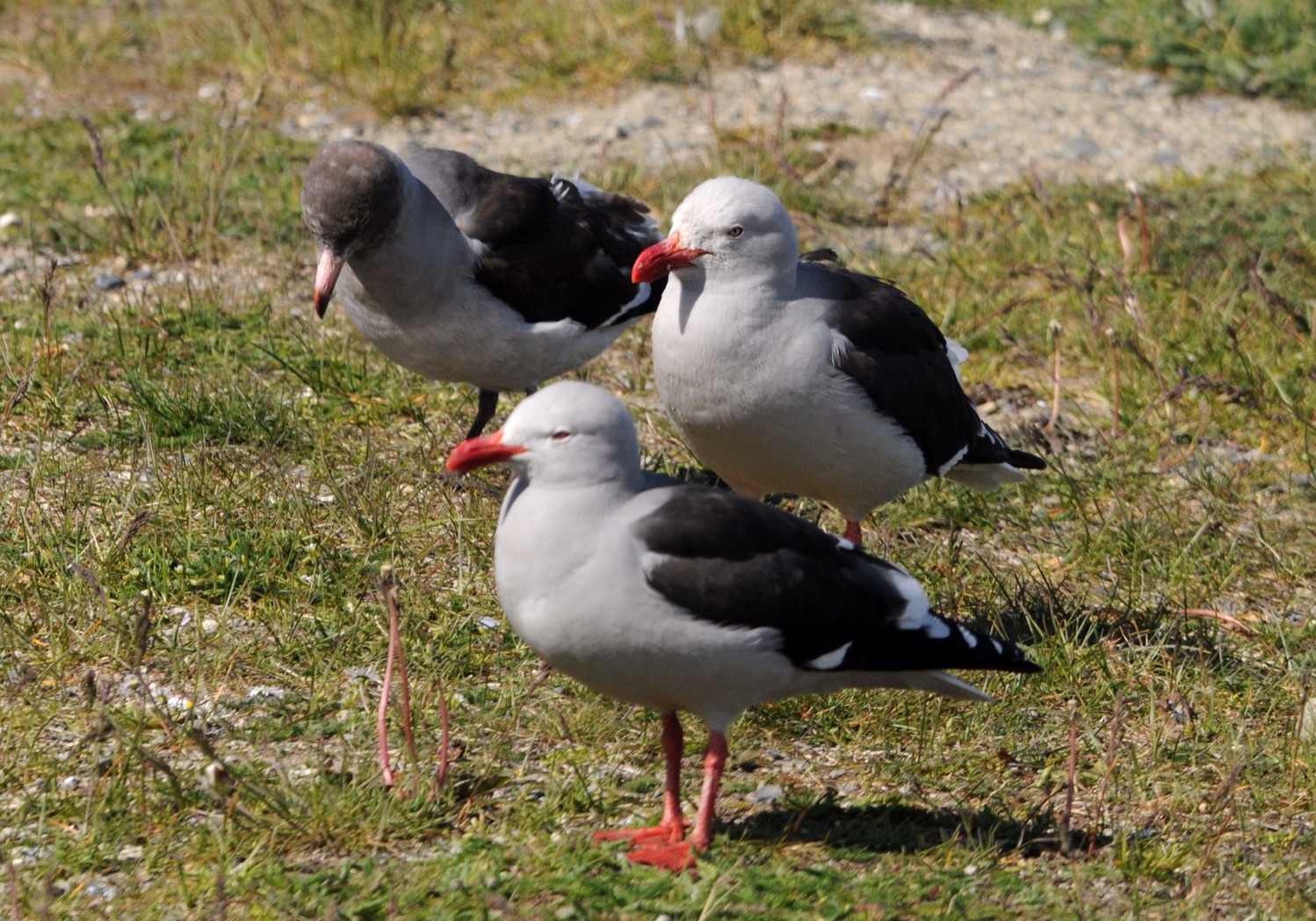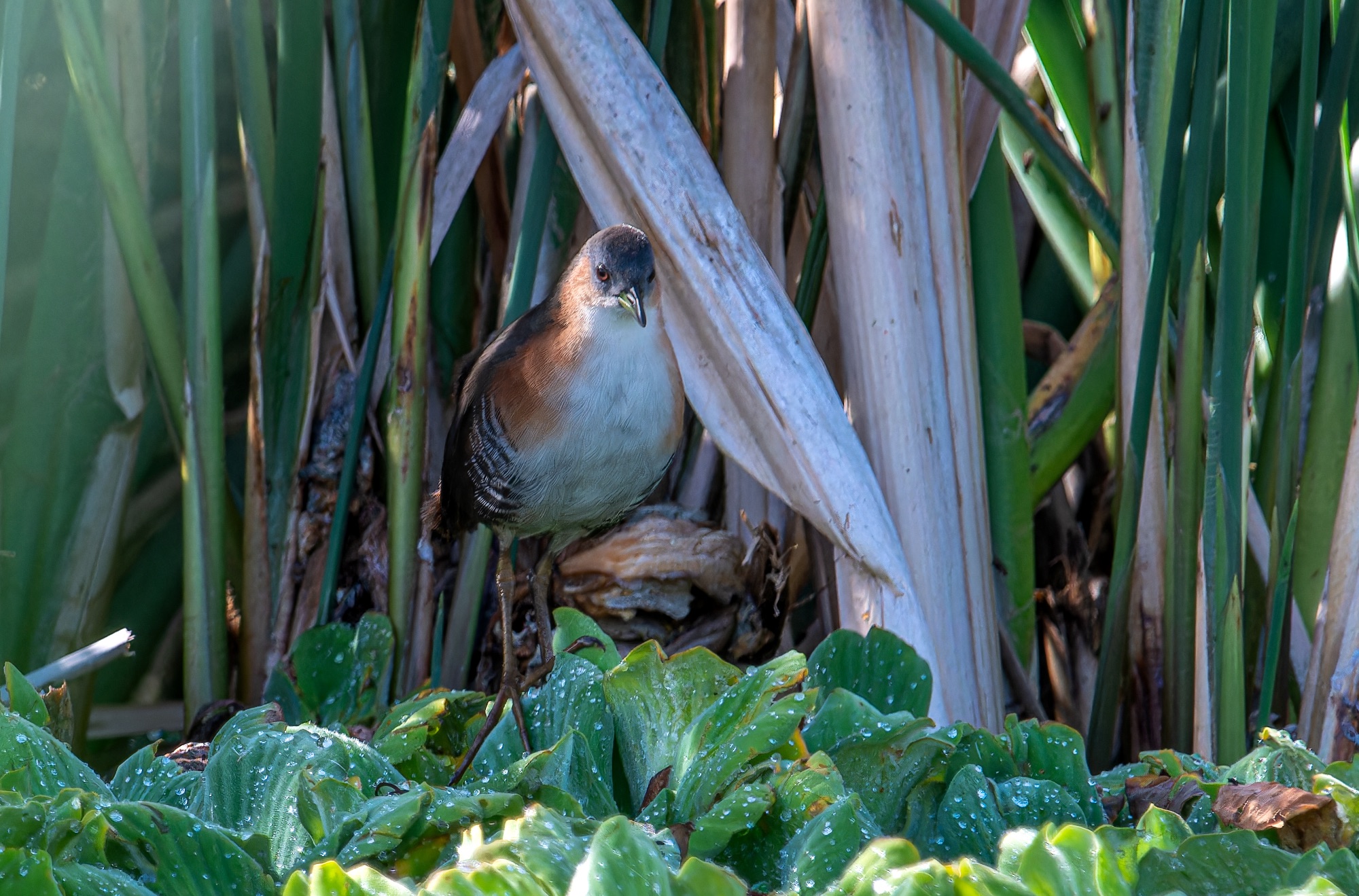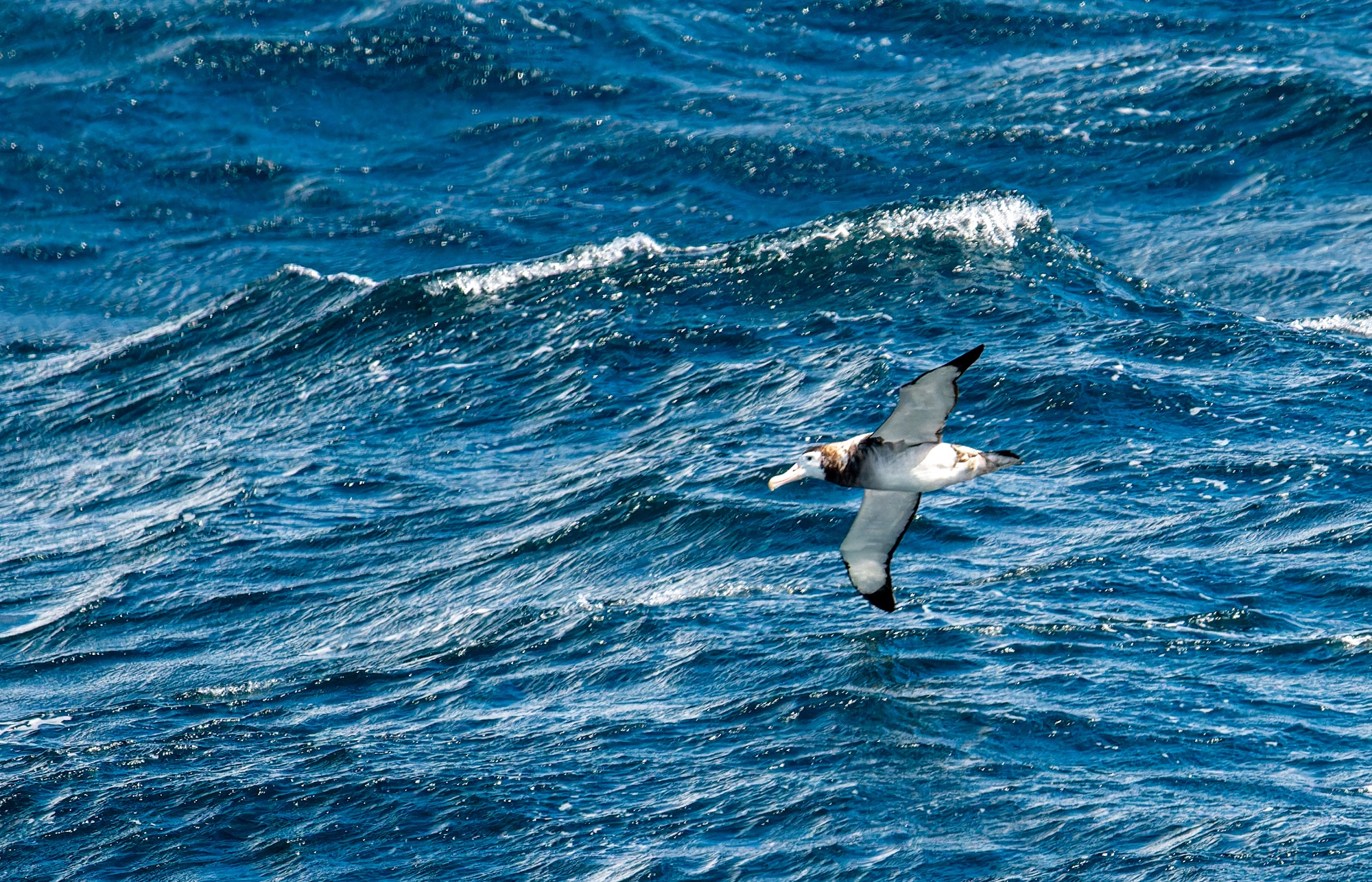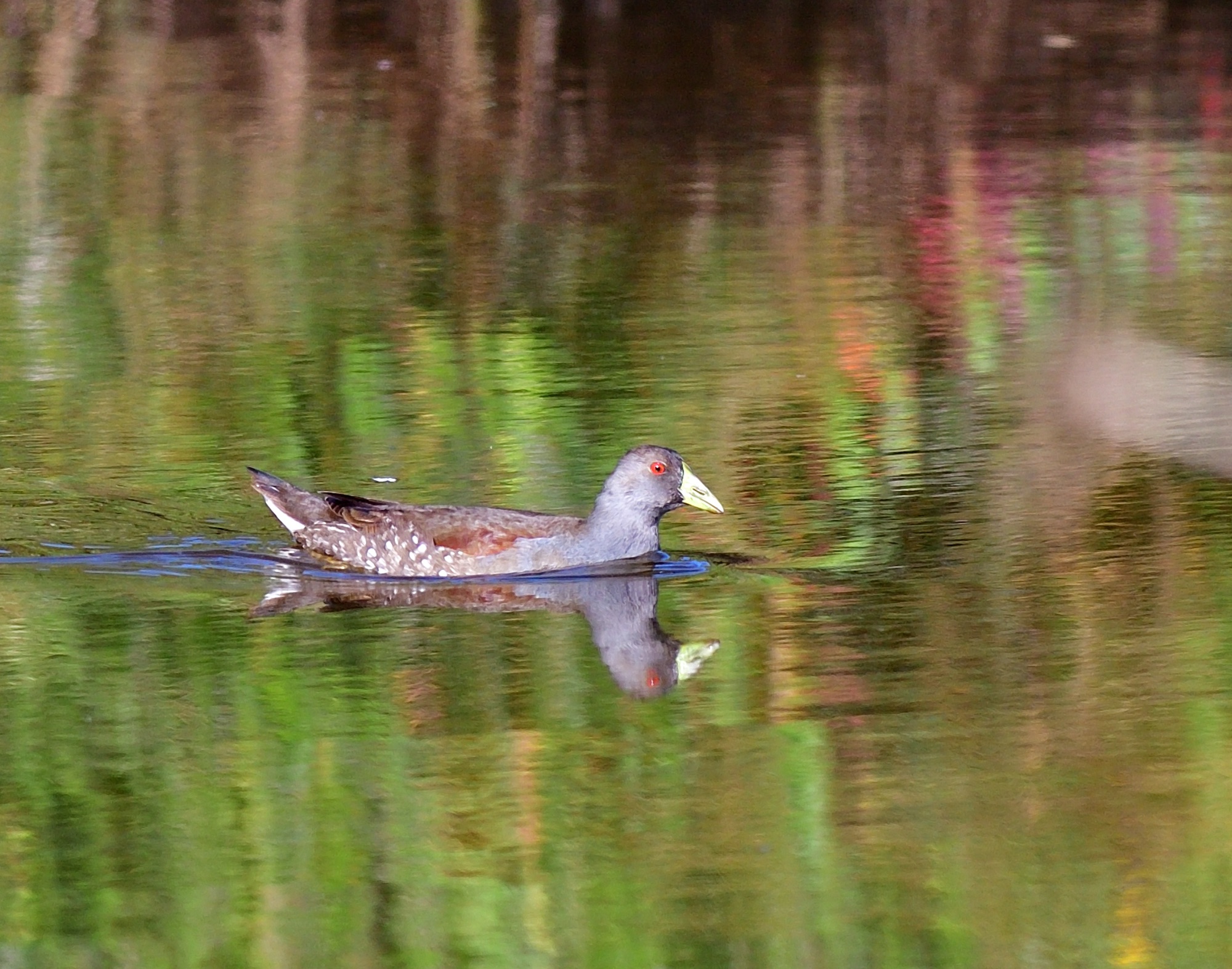EPIC CAPE HORN and STRAIT OF MAGELLAN PELAGIC CRUISE
CHILE PRE-TOUR EXTENSION
DAY 1 ARRIVAL IN SANTIAGO - 18th Feb 2028
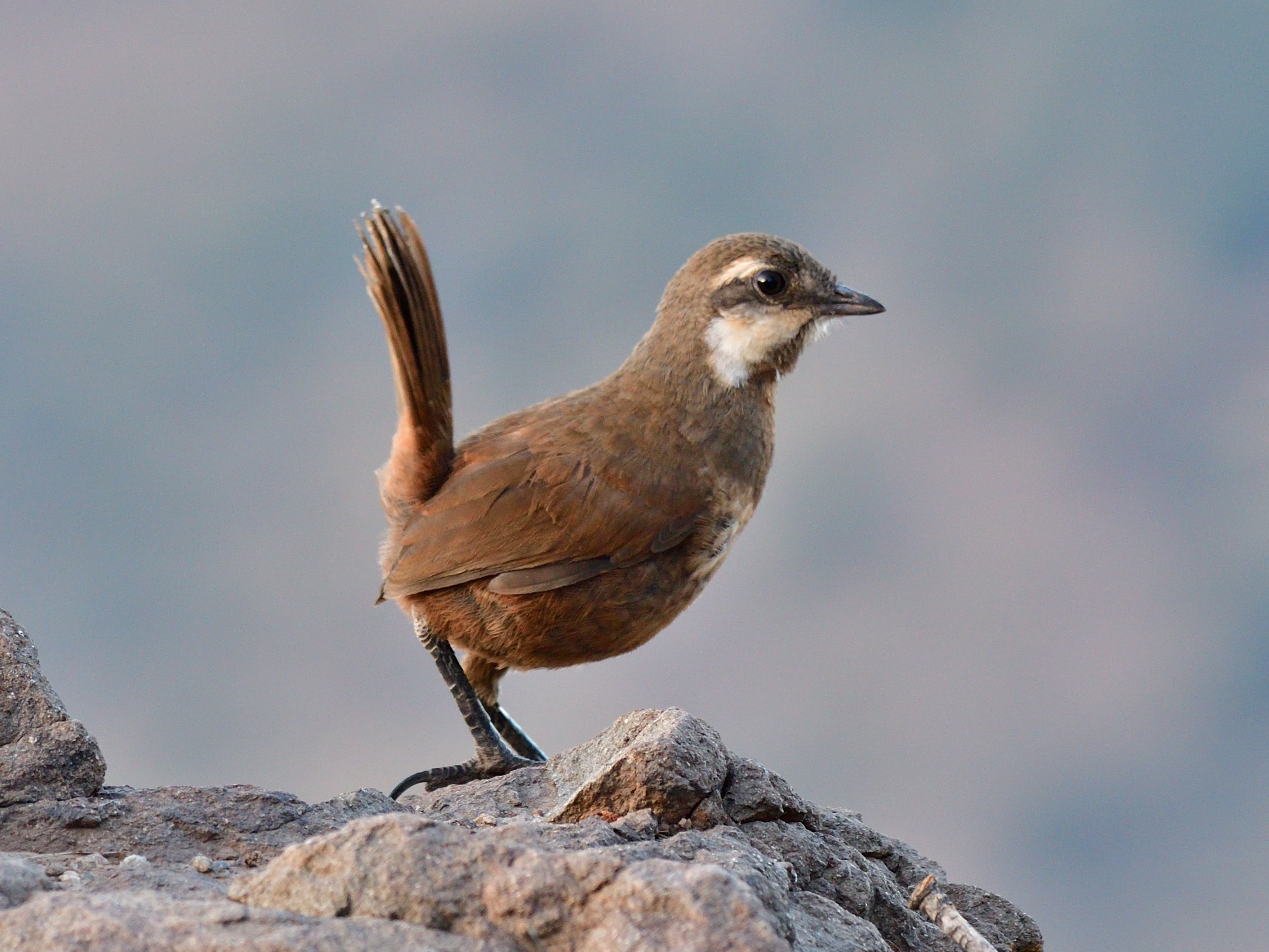
This is purely an arrival day for anyone attending the pre-tour extension and no birding activities are planned. Upon arrival we will transfer to a nearby hotel. Night in Santiago.
DAY 2 EL YESO

After breakfast we will meet up with our local guide and head into the stunning El Yeso for species like Grey-breasted Seedsnipe, White-sided Hillstar, Mountain Caracara, Crag Chilia, Moustached Turca and several other Andean specialties such as Black-winged Ground-Dove, Creamy-rumped Miner, Sharp-billed Canastero, Grey-flanked Cinclodes, Black-billed Shrike-Tyrant, Rufous-banded Miner, Black-fronted Ground-Tyrant, Greater Yellow-Finch and Yellow-rumped Siskin. However, our main target for today will be the much-wanted Diademed Sandpiper-Plover that we should find at one of the marshes, surrounded by some of the most spectacular scenery imaginable. Night in Santiago.
DAY 3 FARELLONES - VALLE NEVADO
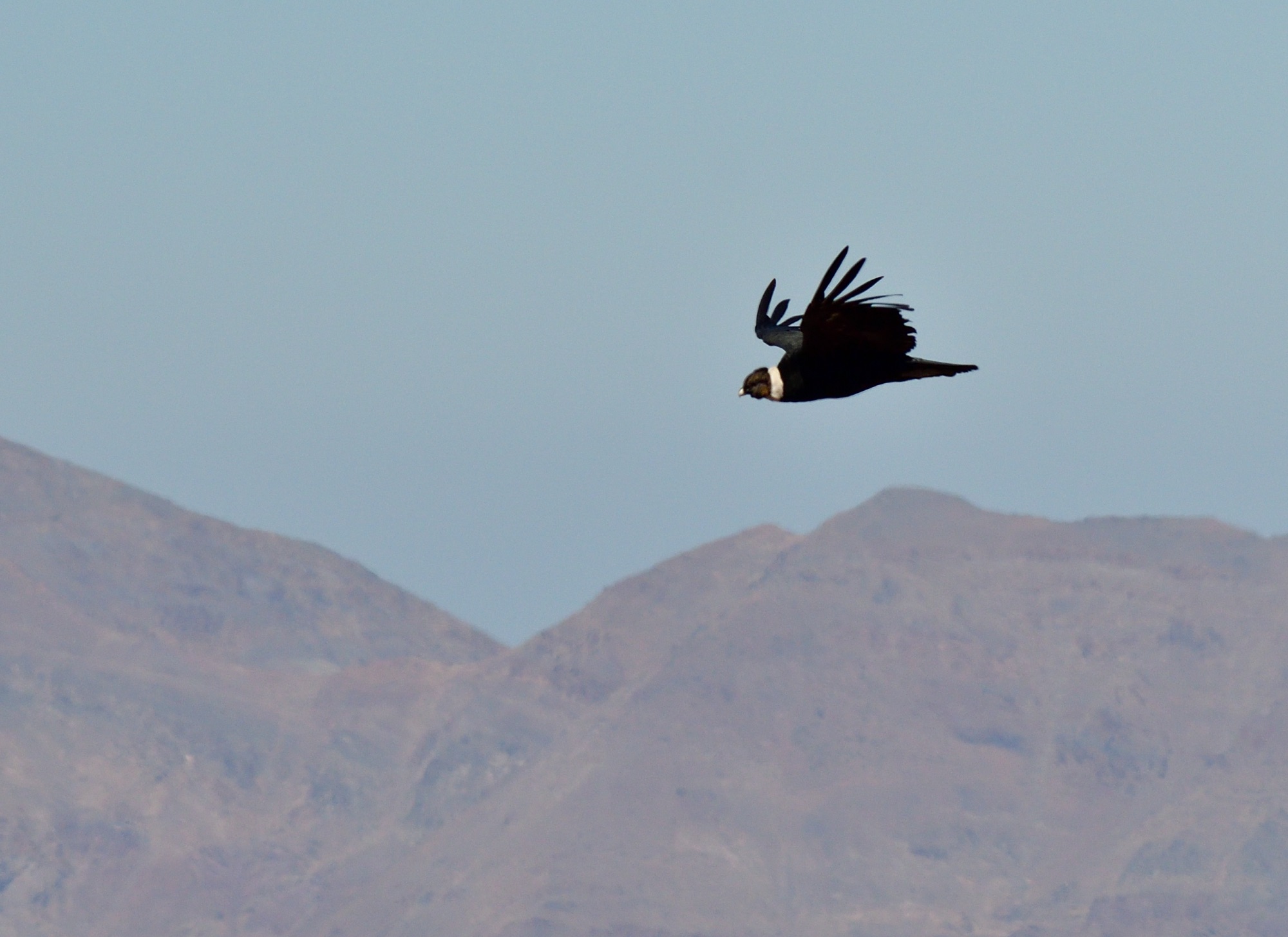
We will spend the whole day birding amidst the spectacular scenery of Farellones and Valle Nevado (3000m) for species such as Chilean Tinamou, Rufous-banded Miner, Scale-throated Earthcreeper, Chilean Mockingbird, Spot-billed and White-browed Ground-Tyrants and a variety of typical Andean birds including Andean Condor, White-sided Hillstar, Mountain Parakeet and Band-tailed Sierra-Finch among many others. Night in Santiago.
DAY 4 LA CAMPANA NATIONAL PARK - END OF PRE-TOUR EXTENSION
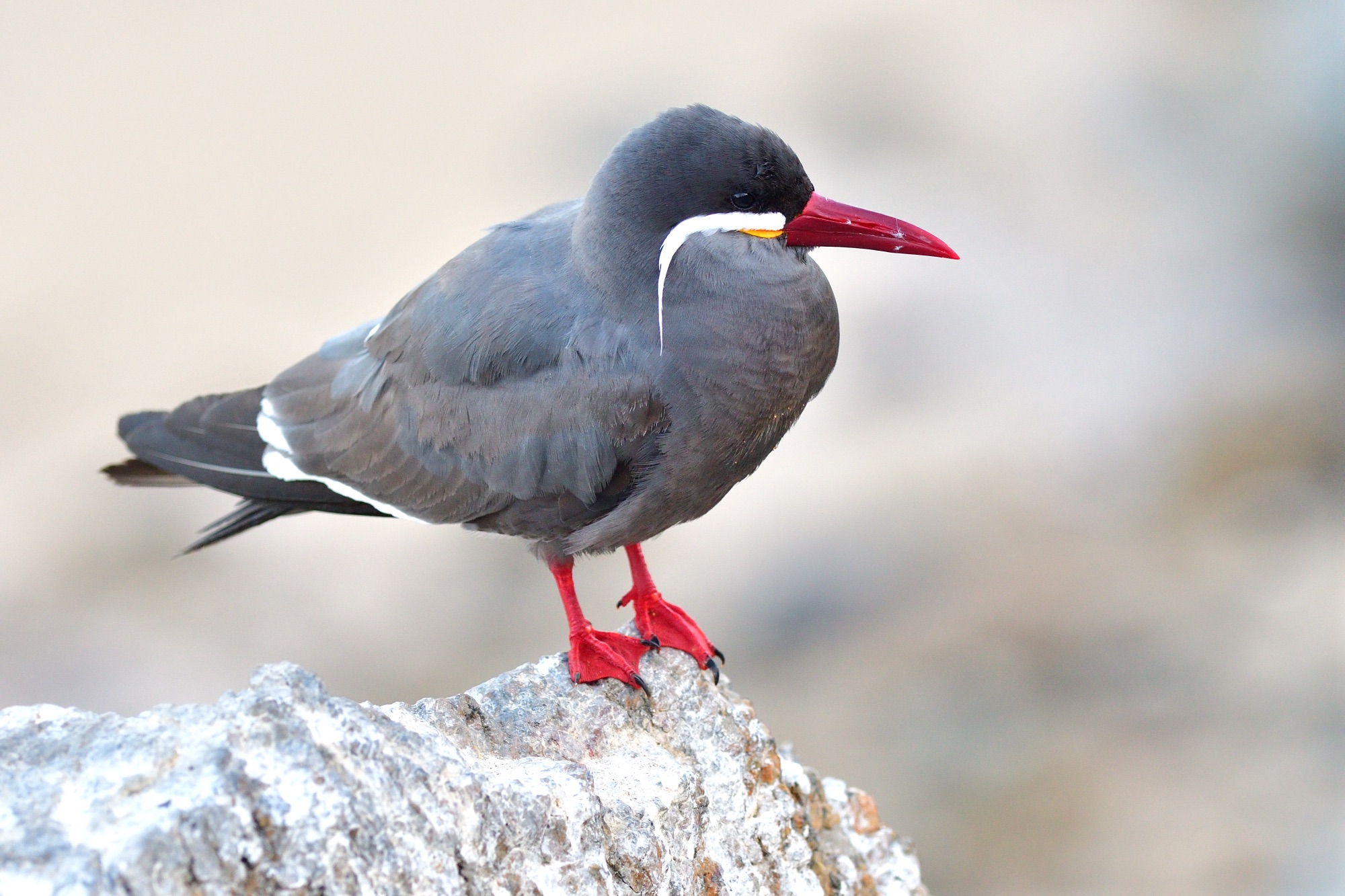
Another exciting day awaits as we visit La Campana National Park, this World Biosphere Reserve we will look for interesting passerines, including some striking Chilean endemics including Dusky-tailed Canastero, Moustached Turca, Crag Chilia, Dusky-tailed Canastero, White-throated and Dusky Tapaculos and Chilean Mockingbird. We are also likely to encounter the remarkable Giant Hummingbird, Austral Pygmy Owl, Chilean Pigeon, Chilean Flicker, Chilean Elaenia, Fire-eyed Diucon, Austral Thrush, Austral Blackbird, Chilean Swallow, Plain-mantled Tit-Spinetail and Great Shrike-Tyrant, the largest New World tyrant-flycatcher. In the afternoon, we will continue exploring the coastal areas visiting Cachagua and its protected breeding colony of Humboldt Penguin; here we hope to see the scarce and range-restricted Marine Otter and hopefully we can find South American Painted Snipe or a Stripe-backed Bittern at some marshes. There's also a ton of shorebirds that usually include Surfbirds, and a colony of Inca Terns too. Later we will drive to San Antonio port in plenty of time to board our cruise ship.
For anyone not doing the pre-cruise extension this is the arrival day for commencement of the cruise. You will be given meeting instructions and information on where to meet your guides prior to boarding our cruise ship in San Antonio harbour. Please note this is a ninety minute taxi ride from Santiago Airport.
EPIC CAPE HORN CRUISE
CRUISE DAY 1 SAN ANTONIO HARBOUR - 21ST FEBRUARY 2028
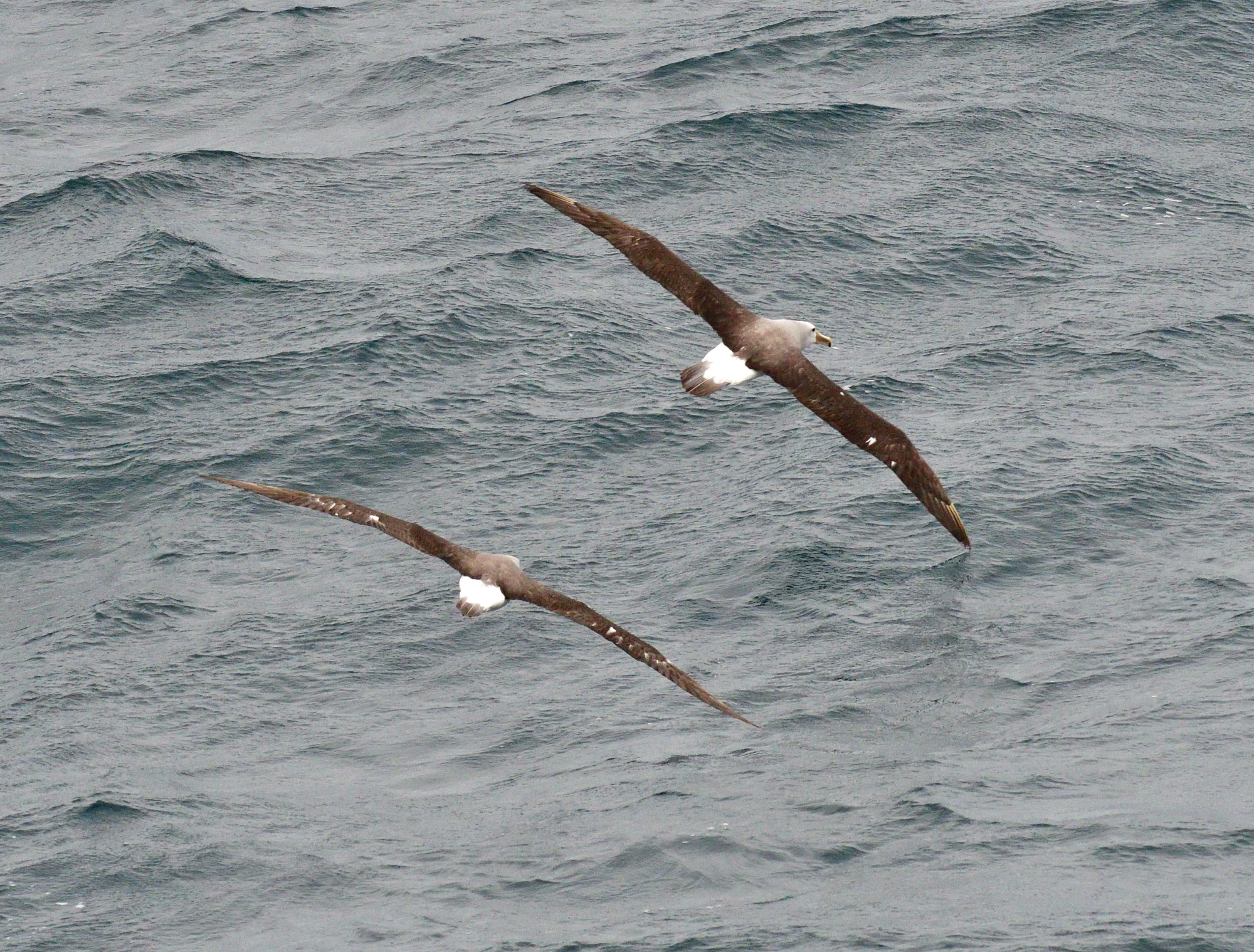
The cruise begins at 6pm today in San Antonio Port, which is 116kms from Santiago, Chile. We will meet this afternoon for an introductory briefing prior to boarding the ship in San Antonio port. And we should see our first seabirds as we leave the port such as South American and Elegant Terns, Black-browed Albatross, Salvin's Albatross, Sooty Shearwater, White-chinned Petrel and others. As long as the ship departs the harbour on time, we have chances of seeing Chatham Albatross before sunset.
CRUISE DAY 2 AT SEA

Our first exciting full day at sea as we head south into the open ocean. We will be expecting to see numerous Black-browed Albatrosses and they will probably outnumber Salvin's Albatross, whilst Northern Royal Albatross will also be present, and we could well see our first Antipodean Wandering Albatross today. What chance of a Chatham Albatross today? We will have fun identifying Westland from the numerous White-chinned Petrels and be hoping for something rarer after a few hours sailing with both Masatierra and Juan-Fernandez Petrels distinctly possible. Sooty Shearwaters can be seen in thousands, later in the day Stejneger's Petrels could become more apparent and in the afternoon we will sail near Mocha Island where 90 percent of the world's population of Pink-footed Shearwaters breed, so we hope to see a few! Non-seabird highlights can include a variety of whales with Humpback and Fin Whales the most likely.
CRUISE DAY 3 PUERTO MONTT, CHILE

After disembarking from the ship in Puerto Montt we will meet our local guide and drive towards Alerce Andino National Park, located just one hour south where we will explore the lush temperate rainforest. This National Park was established to protect the last stands of one of the oldest living conifer species, the Alerce or Lahuan, a critically endangered tree. Some giant trees in this park are several thousand year old and still living! Here we will search for a variety of Patagonian rainforest specialties including Chilean Hawk, Green-backed Firecrown, Chilean (White-crested) Elaenia, the skulking Black-throated Huet-huet, Des Mur's Wiretail, Chucao and Ochre-flanked Tapaculos, Thorn-tailed Rayadito, White-throated Treerunner and Patagonian Sierra-Finch. In the background, snow-capped volcanoes and blue lakes provide unique opportunities for landscape photography. En-route back to Puerto Montt after a picnic lunch, we’ll scan the intertidal mudflats in search of wintering flocks of Nearctic visitors such as Hudsonian Godwit, Red Knot and Sanderling, whilst other common coastal birds include the stocky Flightless Steamer-Duck, Black-necked Swan, Rock Cormorant, American Oystercatcher, Brown-hooded Gull and maybe even the local Snowy-crowned (Trudeau’s) Tern.
Once back aboard the ship our day won't be over, as we leave post at 6pm and head back out to sea and that gives us a couple of hours to scan for one of the rarest seabirds in these waters, the recently-described Pincoya Storm-Petrel. This species was only discovered in 2009 and has only been seen in the waters just off Puerto Montt. So let's keep our eyes peeled!
CRUISE DAY 4 AT SEA

First light will see us scanning the open ocean and we should see good numbers of Fuegian Storm-Petrel, the chilensis race of Wilson's Storm-Petrel found in these waters off Chile is a proposed split. More apparent will be numerous Salvin's and Black-browed Albatrosses, and we will be searching for the majestic Wandering (Snowy) and Antipodean Albatrosses. Amongst the more numerous Northern Royal Albatrosses we can test our identification skills by picking out the odd Southern Royal Albatross. Increasing our albatross list today means we need a bit of luck to spot a Buller's or even a Chatham Albatross, so fingers crossed! We should also see huge numbers of Sooty Shearwaters today as several million breed on islands along our route today, and amidst these flocks we could find the paler and more graceful Stejneger's Petrel.
CRUISE DAY 5 AMALIA GLACIER

We will wake up to find ourselves sailing amidst an awesome landscape as we sail through the Chilean Channel surrounded by seabirds. Again, Black-browed Albatross will be common, but we'll be on the lookout for Magellanic Penguin before we sail slowly through the fjords and beside the stunning Amalia Glacier. We should also see the diminutive Magellanic Diving-Petrel, as well as Southern Giant-Petrel and Chilean Skua should be seen today, along with Slender-billed Prion, and hopefully we can get good views of Grey-headed Albatross as well. There's also the possibility of finding the rare Subantarctic (Little) Shearwater today. Towards the end of the day we will head into the Strait of Magellan and our next destination, keeping a look-out for Peale's Dolphin along the way. On the 2023 cruise we found the first White-headed Petrel for Chile in these waters!
CRUISE DAY 6 PUNTA ARENAS, PATAGONIA, CHILE
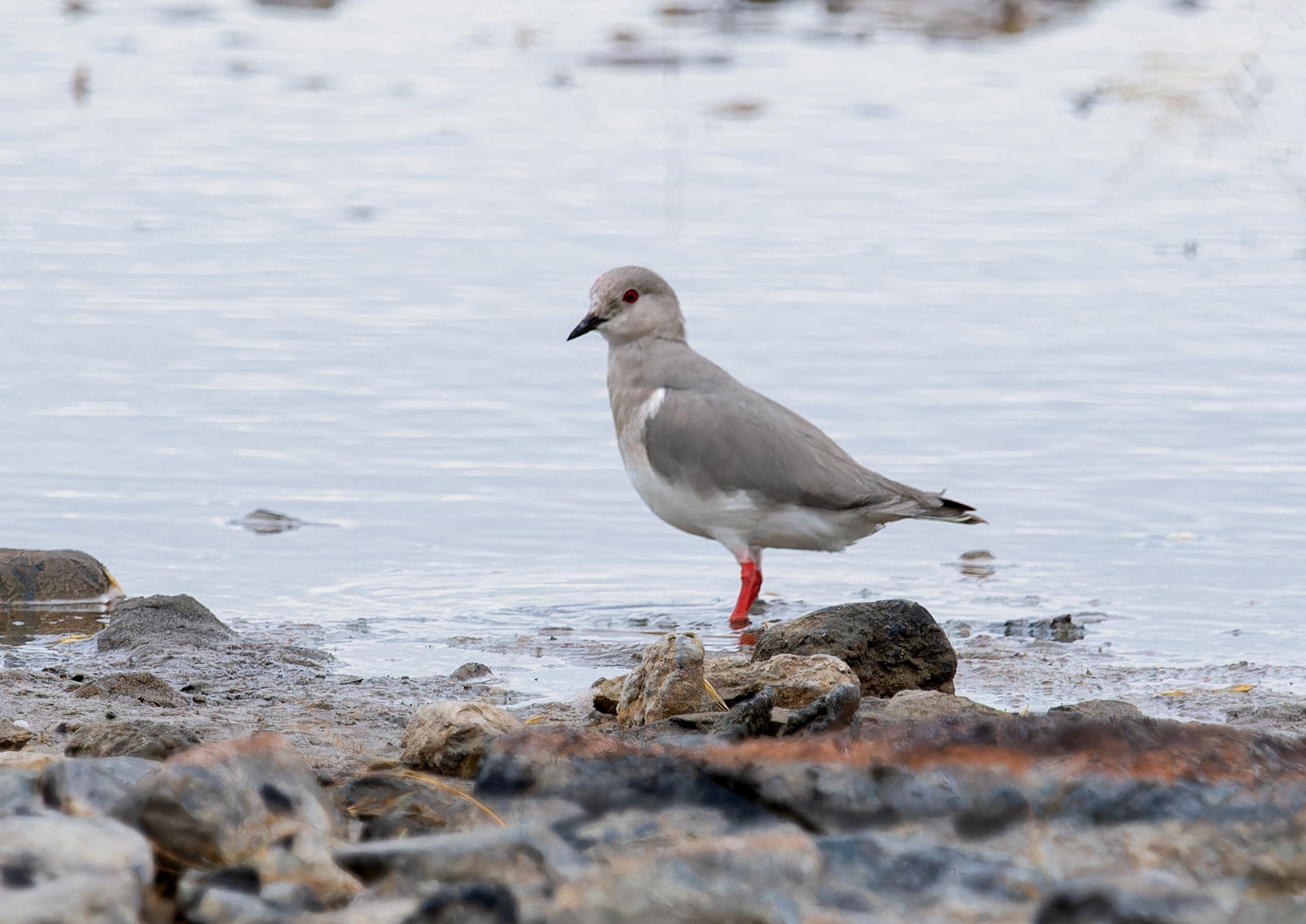
Right after meeting our naturalist guide at Punta Arenas port, we will be birding along the rocky shores of the Magellan Straits where species such as both Imperial and Rock Cormorants, Chilean Skua, Dolphin Gull and South American Tern can be seen. We will inspect the productive wetland of Tres Puentes just outside town as this place holds a great variety of waterfowl including Crested Duck, Chiloe Wigeon, Red Shoveler, Yellow-billed Teal and Yellow-billed Pintail, whilst South American Snipe can be spotted here while performing its characteristic flight display. Driving across the vast and seemingly bleak grasslands, we will see typical birds of the steppe such as Lesser Rhea, Cinereous Harrier, Magellanic Oystercatcher and Correndera Pipit. One of the main targets of today’s outing is the odd-looking Magellanic Plover, which occurs in some brackish ponds nearby. The sole member of the Pluvianellidae family, this wader is one of the highlights of any birding trip in Patagonia and we will learn a great deal about its natural history today from our knowledgeable guide. We will also spend considerable time driving back roads and scanning for interesting and well-camouflaged species, including Tawny-throated and Rufous-chested Dotterels, Two-banded Plover and Least Seedsnipe. Interesting passerines also occur here also and we will look for specialties such as Common Miner, Austral Canastero, Austral Negrito, Band-tailed Earthcreeper, Chocolate-vented Tyrant and the stunning Black-throated Finch. The steppe seems like a fairly modest ecosystem however it holds a rich array of mammals too including Guanaco, Southern Grey Fox, Patagonian Hog-nosed Skunk and Patagonian Hairy Armadillo among others. Returning to the Magellan Straits, we will look again for waterbirds such as Silvery Grebe, Chilean Flamingo, Coscoroba Swan, Silver Teal, Red-gartered and White-winged Coots. Also, Flying Steamer-Duck, Upland, Ashy-headed and hopefully the scarce Ruddy-headed Goose will be spotted in the area during our visit. Back on-board we will sail towards Ushuaia and the Beagle Channel and still have a couple of hours of daylight to get our seabird fix and admire the stunning scenery. Cetaceans could figure prominently as both Peale's Dolphin and both Humpback & Sei Whales inhabit these waters.
CRUISE DAY 7 USHUAIA, ARGENTINA

We will be keeping an eye out for Flightless and Flying Steamer-Ducks this morning as we sail along the Beagle Channel, and there should be numerous Imperial Cormorants and Chilean Skuas as well before our midday arrival into Ushuaia. Once ashore we will meet up with another naturalist before heading into Tierra del Fuego National Park and make a concerted effort to find the magnificent Magellanic Woodpecker. Amidst yet more spectacular scenery we could also find Kelp and Ashy-headed Goose, Spectacled Duck, Great Grebe, Dolphin Gull, South American Tern, White-throated, Southern Crested and Chimango Caracara, Austral Pygmy-Owl, Thorn-tailed Rayadito, Dark-bellied Cinclodes, White-throated Treerunner, Black-chinned Siskin and Patagonian Sierra-Finch.
CRUISE DAY 8 CAPE HORN (AT SEA)
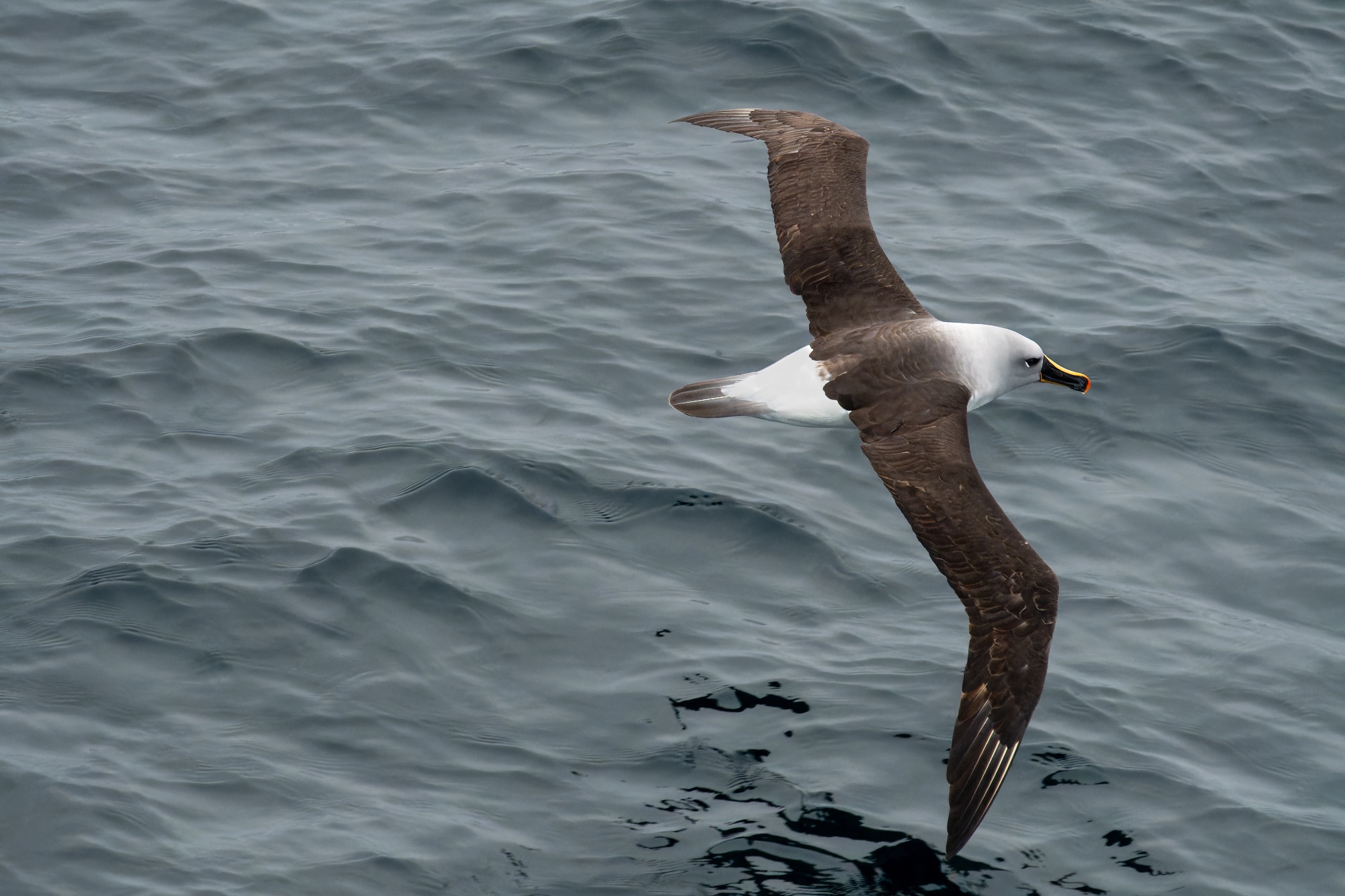
This should prove to be an exciting day as almost anything is possible as we sail past Cape Horn and into the remote southern ocean that teems with seabirds. Whilst we can always hope for a rare Light-mantled Albatross cruising amidst the much commoner Black-browed Albatrosses, more likely species include Wandering (Snowy) Albatross, whilst Southern Royal Albatross should be more prominent, and there's another chance of Grey-headed Albatross today. Today may well be our best chance of finding a Black-bellied Storm-Petrel in the huge flocks of Sooty Shearwaters that patrol the seas off Cape Horn or a Southern Fulmar or Cape Petrel, whilst getting a decent view of a Common Diving-Petrel will take some persistance! When you think of the possibilities and species recorded in this part of the world then we can always hope for something mega such as Kerguelen Petrel, Cook's or Mottled Petrel, or even a Spectacled or Parkinson's Petrel. Let's keep our fingers crossed and remember that we are on searching for these incredible species from the relative comfort of a full, working cruise ship.
CRUISE DAY 9 FALKLAND ISLANDS

Upon arrival in Port Stanley we will drive for to Volunteer Point in jeeps we've previously arranged and although the drive can take up to 2 hours and the second half of the drive is off-road we feel the journey is worthwhile. That is because up to 2,000 King Penguins breed here and this will surely provide one of the most memorable highlights of the tour. There is also a colony of Gentoo and Magellanic Penguins here to keep us entertained and photgraphic opportunities could be very good! We can chat to the wardens and get an insight into the lives of the penguins and have a thoroughly enjoyable time. We will also be on the look-out for Imperial Cormorant, Snowy Sheathbill, Falkland Steamer-Duck, Two-banded Plover, Rufous-chested Dotterel, Dark-faced Ground-Tyrant, and hopefully White-bridled Finch. On return to Port Stanley there may be a little time to visit a gift shop, museum or even the local pub before returning to the ship. Sailing out to sea from here provides further opportunities of seeing Slender-billed Prion and other seabirds, as well as having a chance of Southern Right Whale as well. Heading north there's a chance of Sooty Albatross too.
CRUISE DAY 10 AT SEA
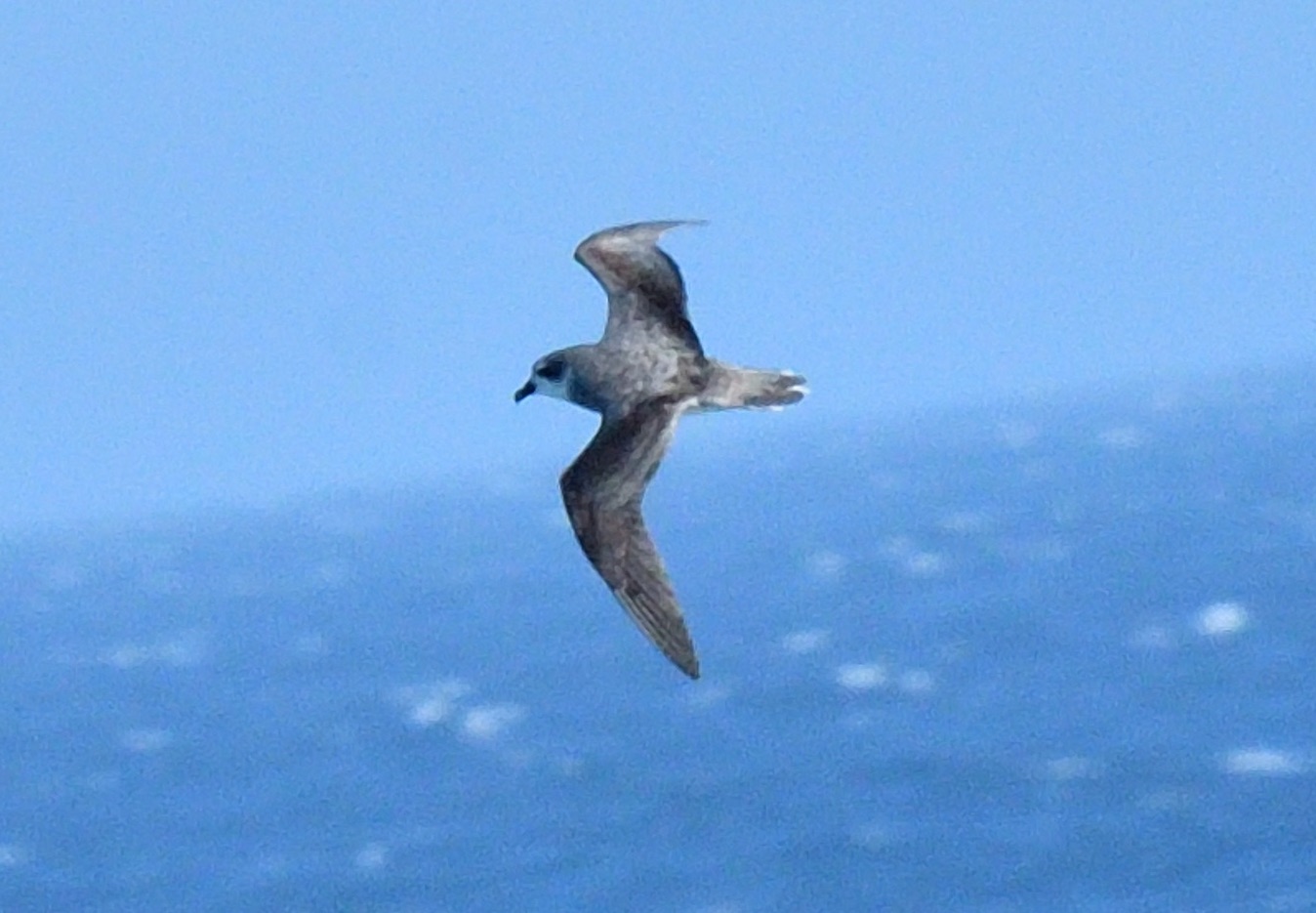
A full day at sea in the seabird-rich South Atlantic seas gives us our best opportunity of finding the graceful Soft-plumaged Petrel. We should see many more Sooty Shearwaters, along with Manx and Great Shearwaters, and huge numbers of Black-browed Albatross are likely today, whilst rarer species to find include Grey-backed Storm-Petrel and Atlantic Petrel amongst others.
CRUISE DAY 11 PUERTO MADRYN
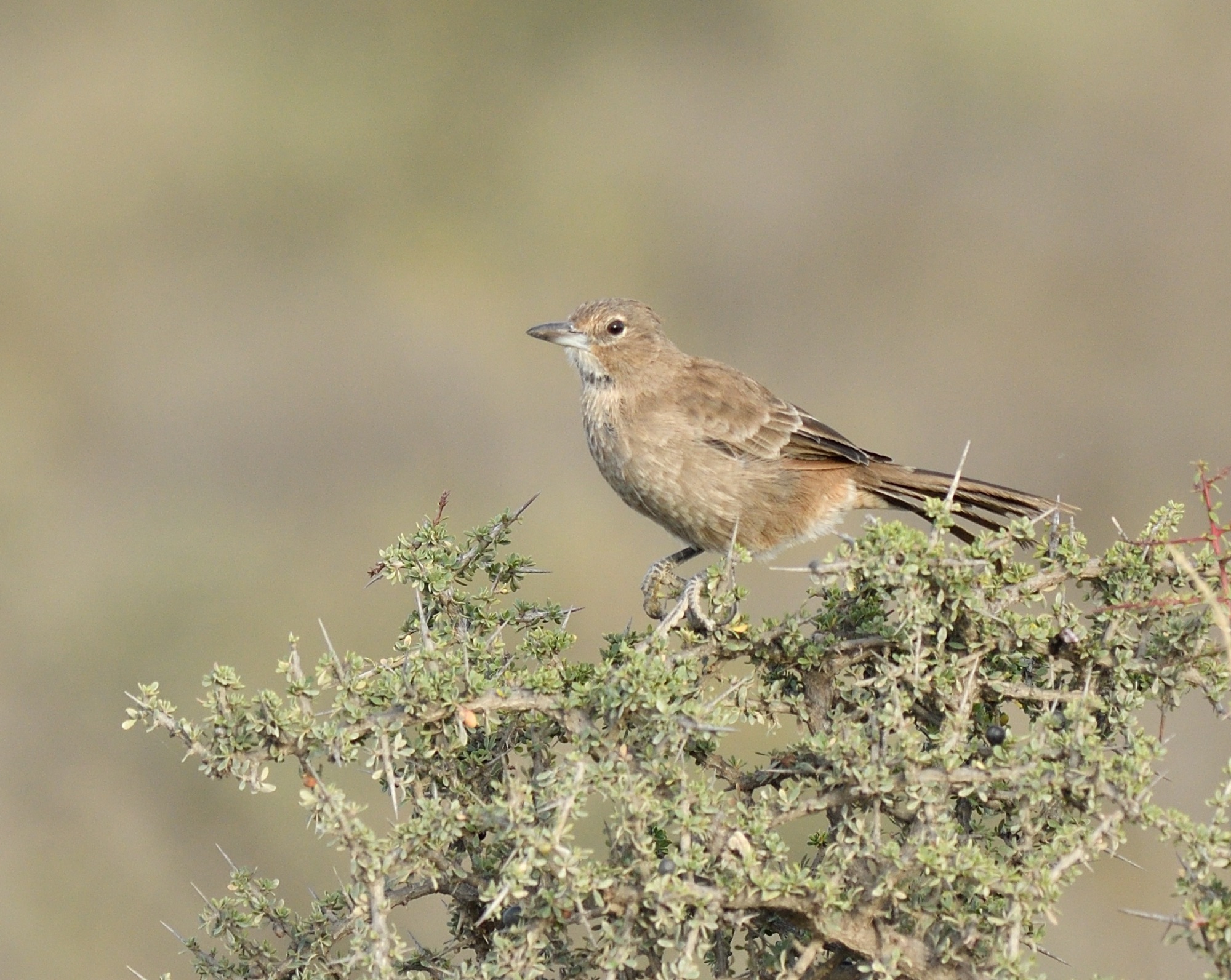
Once we have left the ship we will head south from the Valdes Peninsula, birding amidst the wild steppe landscape where Lesser Rhea, Elegant Crested-Tinamou, Common Miner, the endemic Patagonian Canastero, Lesser Shrike-Tyrant, Plain-mantled Tit-Spinetail, the endemic Rusty-backed Monjita and White-throated Cachalote, Patagonian Mockingbird and Short-billed Pipit can be found. There's a spot for the endemic Carbonated Sierra-Finch, another chance of Chocolate-vented Tyrant if we didn't find it at Punta Arenas, and the ultimate prize could be Chubut (White-headed) Steamer-Duck, whichw e saw on the 2023 cruise. There's a lake filled with wildfowl where we can see Silvery Grebe, White-winged, Red-gartered and Red-fronted Coots, Lake Duck, Black-headed Duck, and many other previously seen wildfowl. There's usually a flock of Chilean Flamingo's, as well as Many-coloured Rush-Tyrant and Southern Lapwing. Other species today could include Great Grebe, South American & Cayenne Terns, Flying Steamer-Duck, Variable Hawk, Picui Ground-Dove, Southern Martin, Chalk-browed Mockingbird, Chiguanco Thrush, Mourning Sierra-Finch, Other non-birding highlights today could also include Guanaco, Lesser Cavy or even a Patagonian Mara. The sailing back out to sea in the early evening can also be rewarding for seawatching from deck, with species such as Long-tailed, Pomarine and Arctic Skuas (jaegers), flocks of Great and Manx Shearwaters and yet more Black-browed Albatrosses. This promises to be another exciting day!
CRUISE DAY 12 AT SEA

Another full day at sea and this will probably be our only chance of Atlantic Yellow-nosed Albatross of the entire tour. Other possibilities include White-chinned Petrel, Manx, Great and Cory's Shearwaters, Pomarine and Long-tailed Skuas. Whilst there's an outside possibility of Atlantic or Spectacled Petrels and we also need to stay sharp as there is a chance of the rare Cape Verde Shearwater as well.
CRUISE DAY 13 MONTEVIDEO, URUGUAY
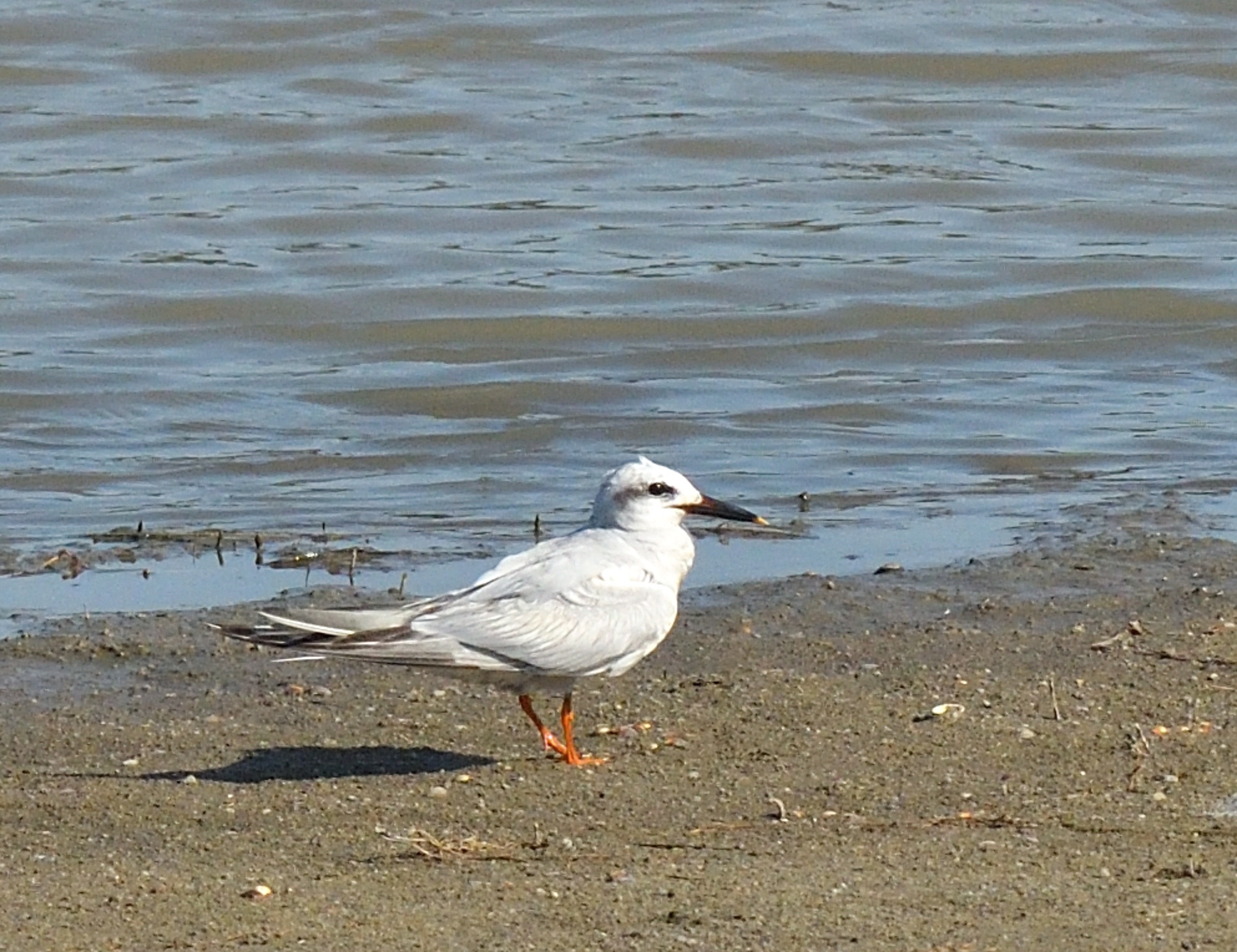
This promises to be an exciting day as we meet our excellent local guide and visit a number of exciting birding sites around Montevideo and seeing 100 species today is highly likely! We will definitely bump up the birdlist today by visiting the Wetlands of Saint Lucia that covers a relatively large extension of coasts, marshes, rural and suburban areas, native and exotic forests. Another great site at Playa Penino has a variety of habitats, among them marshes, grasslands, plowed and cultivated land, and coasts of the River Plate. We can have our picnic lunch in the shade of some trees overlooking the marsh before checking some other lagoons. We can expect up to 80 species today and some of the potential highlights include: White-tufted Grebe, Black-necked and Coscoroba Swan, Brazilian and Silver Teals, Chiloe Wigeon, Cocoi and Whistling Herons, Bare-faced and White-faced Ibis, Limpkin, Giant Wood-Rail, Plumbeous Rail, Rufous-sided Crake, Spot-flanked Gallinule, Red-gartered, Red-fronted and White-winged Coots, Wattled Jacana, Southern Lapwing, Collared Plover, Hudsonian Godwit, various shorebirds, Kelp Gull, Yellow-billed and Snowy-crowned Terns, Black Skimmer, Ringed and Amazon Kingfishers, Monk Parakeet, Dark-billed Cuckoo, White and White-spotted Woodpeckers, Glittering-bellied Emerald, White-throated and Gilded Hummingbirds, Wren-like Rushbird, Sulphur-throated, Spix’s and Stripe- crowned Spinetails, Rufous-capped Antshrike, Sooty Tyrannulet, Bran colored Flycatcher, Spectacled Tyrant, Austral Negrito, Gray and White Monjita, White-rumped Swallow, Black-and-Rufous Warbling-Finch, Long-tailed Reed-Finch, Grassland Yellow-Finch, Great Pampa-Finch, Dark-throated and Rufous-rumped Seedeaters, Yellow-winged Blackbird, Brown-and-Yellow Marshbird, Chalk-browed Mockingbird, Variable Oriole and others.
CRUISE DAY 14 BUENOS AIRES - COSTANERA SUR

We will be in Buenos Aires for the next 24 hours before having to head home, so we can spend the day birding around the fantastic Costanera Sur Reserve, which comprises reed-fringed ponds and shrubby marshes birdered by scrub. There are a lot of potential species but just to whet the appetite we could see: White-tufted Grebe, Rufescent Tiger-Heron, Fulvous and White-faced Whistling Ducks, Coscoroba Swan, Yellow-billed Pintail, Rosy-billed Pochard, Lake Duck, Black-headed Duck, Chimango Caracara, Rufous-sided Crake, Plumbeous Rail, Spot-flanked Gallinule, White-winged, Red-gartered and Red-fronted Coots, Picazuro Pigeon, Eared Dove, Picui Ground-Dove, Guira Cuckoo, Glittering-bellied Emerald, Green-barred Woodpecker, Rufous Hornero, Freckle-breasted Thornbird, White-crested Tyrannulet, Many-coloured Rush-Tyrant, Yellow-browed Tyrant, Fork-tailed Flycatcher, Grey-breasted Martin, White-rumped Swallow, White-winged Becard, Chalk-browed Mockingbird, Rufous-bellied Thrush, Masked Gnatcatcher, Yellow-billed and Red-crested Cardinals, Yellow-winged Blackbird, Southern Yellowthroat, Hooded Siskin, Golden-billed Saltator, Dark-throated & Double-collared Seedeater and Black-and-rufous Warbling-Finch. Once finished here we will spend our last night on board ship and our final dinner together.
CRUISE DAY 15 END OF CRUISE - CEIBAS EXTENSION - 6th March 2028
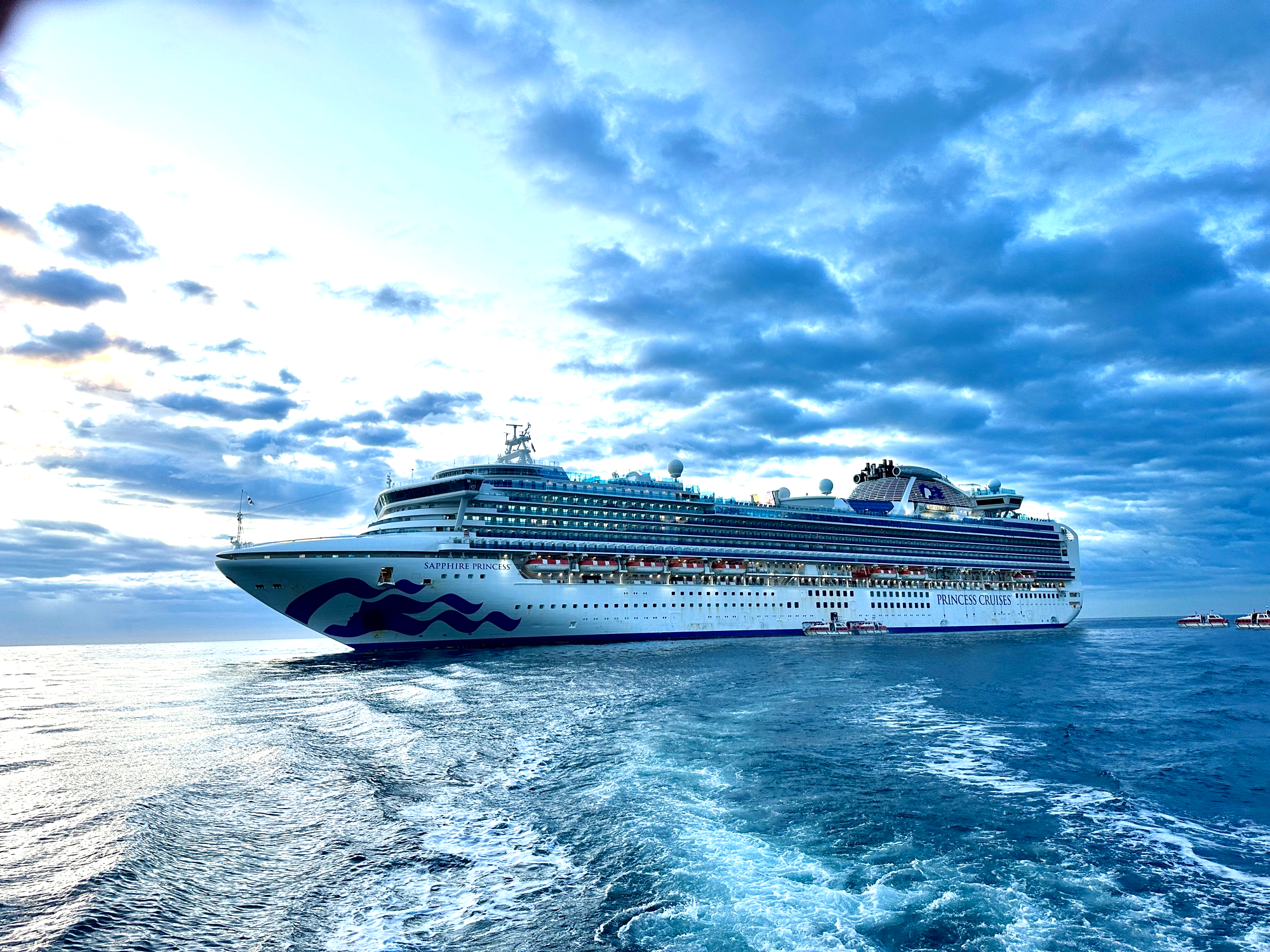
This morning we will disembark the wonderful Sapphire Princess (from 5am) and have plenty of time to catch our international flights home or continue with our exciting Ceibas extension.
CEIBAS EXTENSION
DAY 1 BUENOS AIRES - CEIBAS - 6th March 2028
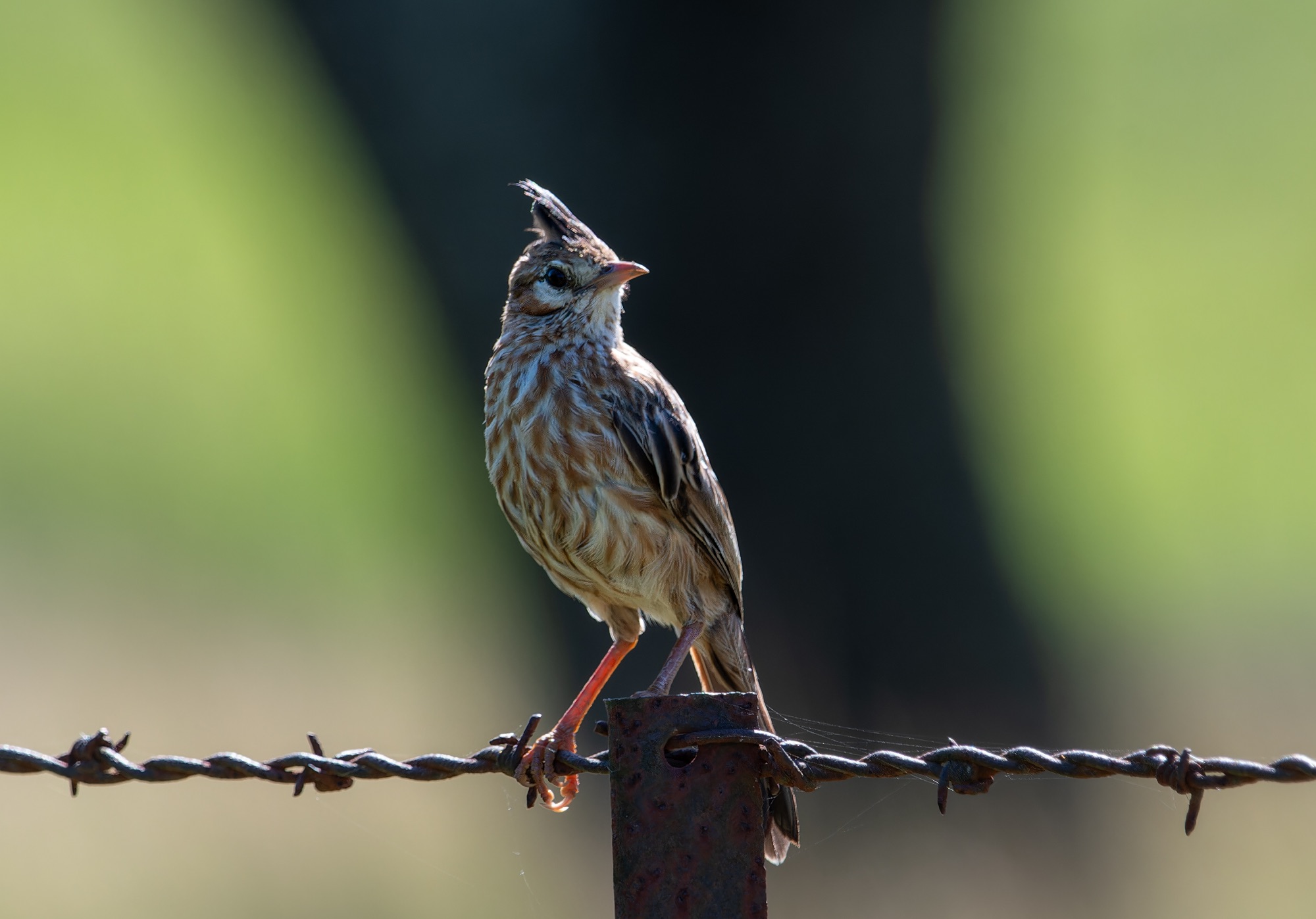
The Pampa is an extensive humid plain shared by Argentina, Uruguay and Brazil. In Argentina, the Pampa Grassland covers an area of more than 50 million hectares in the central part of the country and we are going to visit an amazing area full of birds around Ceibas.
We will make an early start for birding Otamendi National Park, leaving the cruise ship around 6.30am. This 3,000-hectare park sits on the shores of the Paraná River, just north of Buenos Aires, and it is included in the international list of Important Bird Areas. It takes in three of the main bird habitats in Argentina: the Pampas Grasslands, the Thorny Woodland, and the Paraná River Delta providing a huge list of possibilities over the next few days. We would expect to be seeing 80-100 species a day here! Bird highlights possible here include Nacunda Nighthawk, both Straight-billed and Curve-billed Reedhaunters, Diademed Tanager and several widespread species like White-tufted Grebe, Southern Screamer, Long-winged Harrier, Brown-and-yellow Marshbird, Giant Woodrail, Checkered Woodpecker, Chotoy Spinetail, Warbling Doradito and Great Pampa-Finch. We will leave Otamendi and drive to Ceibas, and spend most of the afternoon looking for Spotted Rail, Stripe-backed Bittern, Many-coloured Rush Tyrant, Wren-like Rushbird and Scarlet-headed Blackbird to mention but a few. Other species possible today include Greater Rhea, Red-winged Tinamou, Spotted Nothura, Dusky-legged Guan, Rufous-sided Crake, Spot-flanked Gallinule, Maguari Stork, Jabiru, Bare-faced Ibis, Black-collared and White-tailed Hawks, Yellow-billed and Large-billed Terns, Nanday Parakeet, Chaco Earthcreeper, Rufous Hornero, Firewood-Gatherer, Spectacled and Yellow-browed Tyrants, Red Pileated Finch and Rusty-collared Seedeater. By the end of the day we will be arriving to our quiet and comfortable lodge where we'll spend the following two nights
DAY 2 CEIBAS

The bird abundance in this location makes it really enjoyable for birders the world over, and its dense thorny forests and marshlands are home to an incredible number of species, among which is worth mentioning Greater Rhea, Red-winged Tinamou, Savanna Hawk, White-barred Piculet, White-fronted, Checkered and White Woodpeckers, Turquoise-fronted Amazon, Blue-tufted Starthroat, Variable and Rufous-capped Antshrike, Scimitar-billed Woodcreeper, Brown Cacholote, Sulphur-bearded Reedhaunter, Lark-like Brushrunner, Freckle-breasted Thornbill, Short-billed Canastero, Scimitar-billed Woodcreeper, Pale-breasted and Sooty-fronted Spinetails, Large Elaenia, Green-backed Becard, Tufted Tit-Spinetail and Tawny-bellied Seedeater. After dinner we will go for a walk looking for Tropical Screech-Owl and any of the local nightjars that include Scissor-tailed, Band-winged and Little Nightjars.
DAY 3 CEIBAS - BUENOS AIRES

We will spent this morning looking for new species such as Rosy-billed Pochard, Ringed and Silver Teals, Southern Screamer, White Monjita, Short-billed Canastero, Sulphur-bearded and Stripe-crowned Spinetails, Curve-billed Reedhaunter, White-naped Xenopsaris, Chalk-browed and White-banded Mockingbirds, Correndera & Yellowish Pipit, Tawny-crowned Pygmy-Tyrant, Black-capped Warbling-Finch, White-tipped Plantcutter, Solitary Cacique, Grayish Baywing, Saffron-cowled Blackbird and Marsh Seedeater amongst many others. In the afternoon we will drive to Buenos Aires and a nice hotel where we will have our final dinner together.
DAY 4 END OF TOUR - 9th March
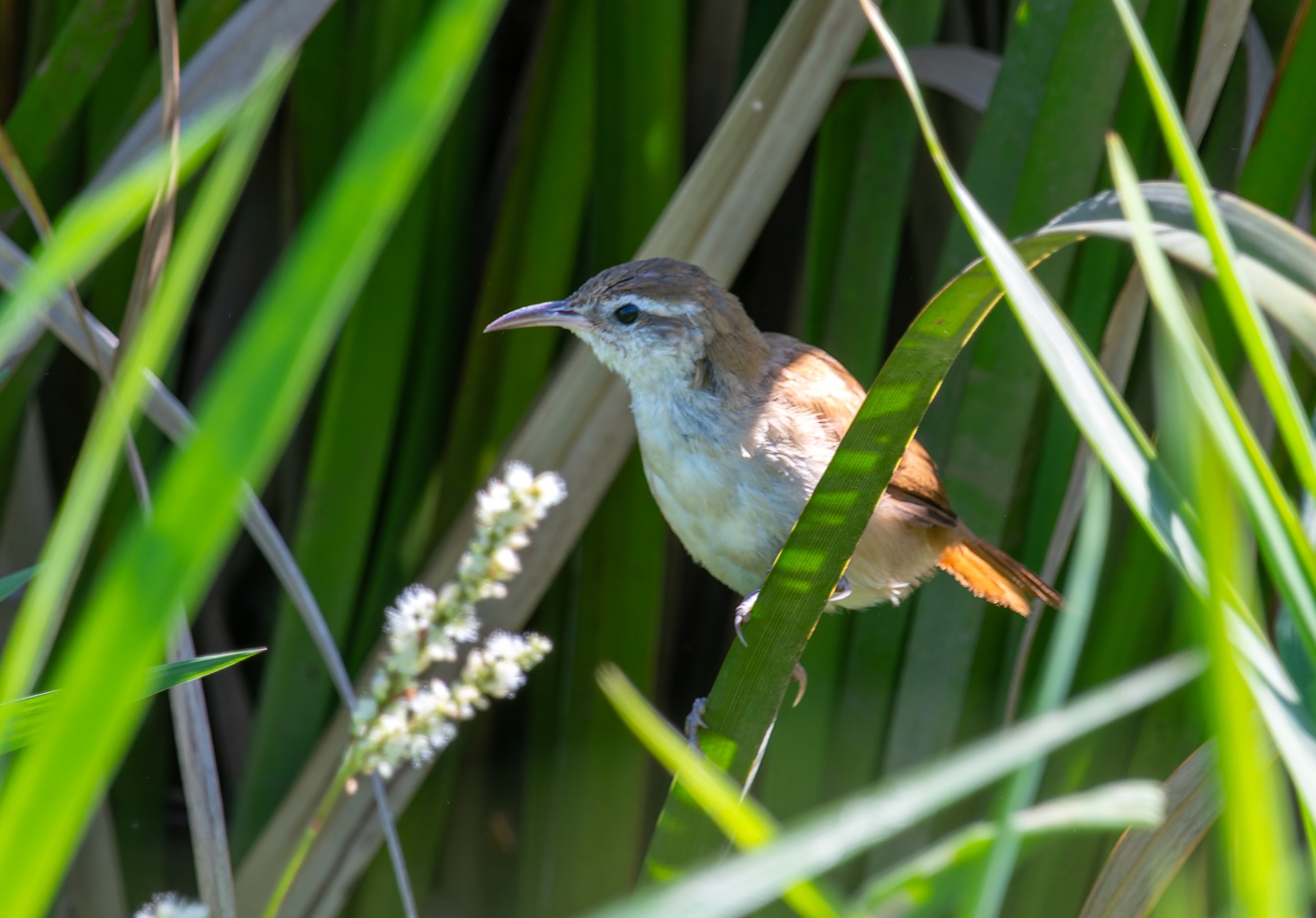
The tour concludes after breakfast this morning before we make our way to the airport for flights home and conclusion of a once-in-a-lifetime tour.
All photos copyright Nick Bray/Zoothera Birding unless otherwise stated.

